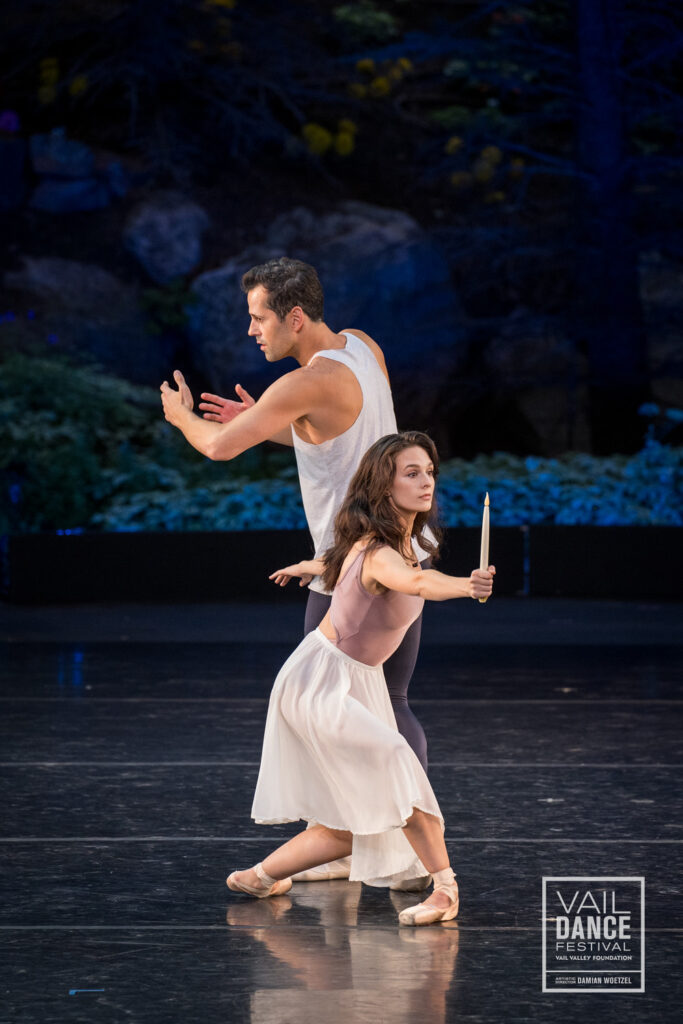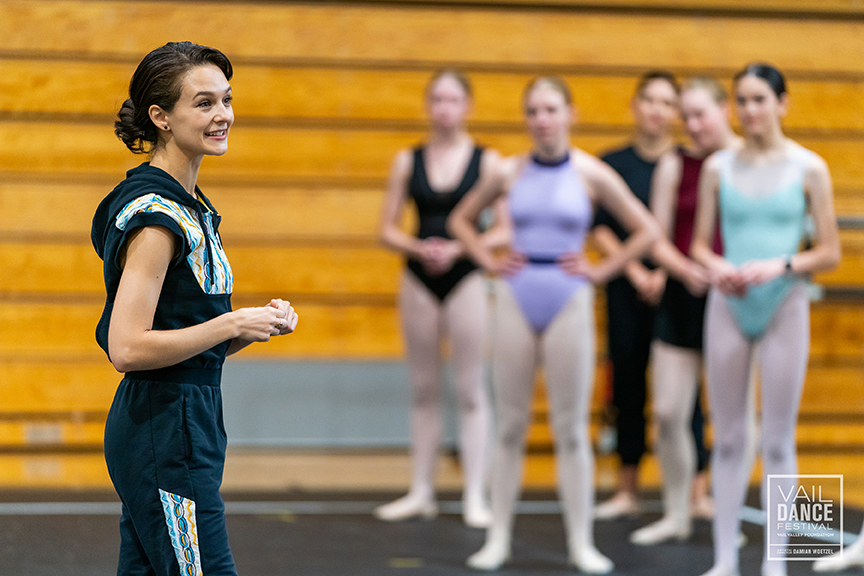Lauren Lovette on Her Career Pivot From Dancer to Dancemaker
In 2019, Lauren Lovette seemed to have it all—she was a star principal at New York City Ballet and was Vail Dance Festival’s artist in residence. But inside, she was ill at ease. “I never really enjoyed performing,” says Lovette, now 32. Intrigued by choreography, she had created her first piece, For Clara, three years earlier for NYCB’s 2016 Fall Fashion Gala. The experience was a baptism by fire—the piece was critically panned—but Lovette was undeterred and kept choreographing for the company and garnered commissions from ABT Studio Company, the Ashley Bouder Project, and Vail Dance Festival. She retired from NYCB in 2021 to pursue her passion for choreography, and in 2022 she was named resident choreographer for the Paul Taylor Dance Company. She also founded a nonprofit, Lauren Lovette Studio, and recently started performing again—and enjoying it in an entirely new way. As she revealed in this interview, Lovette’s career pivot was as personal as it was professional.

How does performing feel now?
Performing has always been my most challenging point. I didn’t live for the show—I lived for class, for rehearsal, being in new choreography, teaching. My “why” is so much more clear now. I don’t want the authenticity of my art to be muddied by anything ego-driven. I asked for that from the universe. Robbie Fairchild and I danced together in Vail this summer—I ended up flat on my butt in our first La Sonnambula performance, and I was trying to figure out why it happened. And what I came down to was: This is exactly what I asked for—humility!
You now feel like you can make art that is yours.
That’s it. I love choreography more than almost anything. Choreography can seem like you’re placing people in certain positions, and you put it to music and it’s great. But it’s even greater than that, because you’re working with live human beings, and they have will of their own, and things they want to say. They surprise you all the time.
What made you feel confident about retiring from NYCB?
During the pandemic, I had time to take a harder look at my life. A lot of the decisions I was making were based on fear or pride. I didn’t know where money would come from, I didn’t have a job, there wasn’t a single person in my life that thought leaving was a good idea. But it could all disappear tomorrow, and I could still stand in myself and say, “I did what was right for me.” I would tell any artist, “I hope that when it comes to your art, you always take a job because it feels true, not because you will take anything you can get.”
You knew people at the highest levels in the dance world, which was an advantage. What else did it take to make this massive change?
I had to rebuild myself emotionally—I went through a big breakup around the same time. Next, it was building a website, reaching out to people I wanted to collaborate with, making connections with people. City Ballet had so many resources, so, you’re right, I had a foundation to build off. But my barometer for everything was: Does this feel true?
How did the Taylor job come about?
[PTDC artistic director] Michael Novak saw Not Our Fate, a piece with a male duet I made for City Ballet, and contacted me. I was terribly nervous to work on my first Taylor commission, Pentimento, but I loved it from the first day. Afterward I went into Michael’s office and said, “I really want to make something else for your company.” I wasn’t met with unkindness, but I wasn’t met with eagerness. I thought, I’m never going to make anything else for this company. Then after I left City Ballet, I got the call.

How do you manage running a freelance business?
I don’t come from the most financially stable upbringing, and I don’t have the education a lot of other people have. So since day one as a ballerina, I was taking every job I could to build savings; I was already doing contract negotiations and emails. The new skills were learning about nonprofits, how to produce shows, marketing. I also have a business partner, Lauren King, who was a soloist at City Ballet. I don’t want anyone to think that I’m doing this alone, because I’m not. Taylor pays for my life. The nonprofit is very small, and neither of us gets a salary.
You have a world premiere, Echo, and a New York premiere, Dreamachine, with Taylor this November.
Echo is my first all-men’s piece for Taylor—the men are beautiful and elegant and strong. The other piece, Dreamachine, is bizarre and fun! It has four movements: In “Da Vinci’s Wings,” a choreographer is making a piece that keeps falling apart. The cartoonist Rube Goldberg inspired the second movement; we use a lot of props, and it’s silly. In the third movement, I wanted the dancers to float, so they’re wearing Heelys and slippery socks. The last movement is inspired by Spock from “Star Trek.”
What are your future plans?
I have three ideas for Taylor, but I can’t talk about them yet! At Taylor, there are no rules. There’s no box I have to fit inside of. It’s so fun to ask the question every day, What is dance?





